Core Drilling Techniques and Applications
Precision drilling for HVAC, plumbing, and electrical installations
Core Drilling for HVAC
Core drilling using specialized equipment with diamond-tipped bits to create precise, circular holes in concrete or other hard surfaces for HVAC system components like ducts and vents. This method is used to make openings in walls, ceilings, or floors for efficient integration of the system without compromising structural integrity. It is preferred over conventional methods because it creates clean, accurate holes, minimizes mess, and is applicable for both new construction and retrofitting existing buildings.
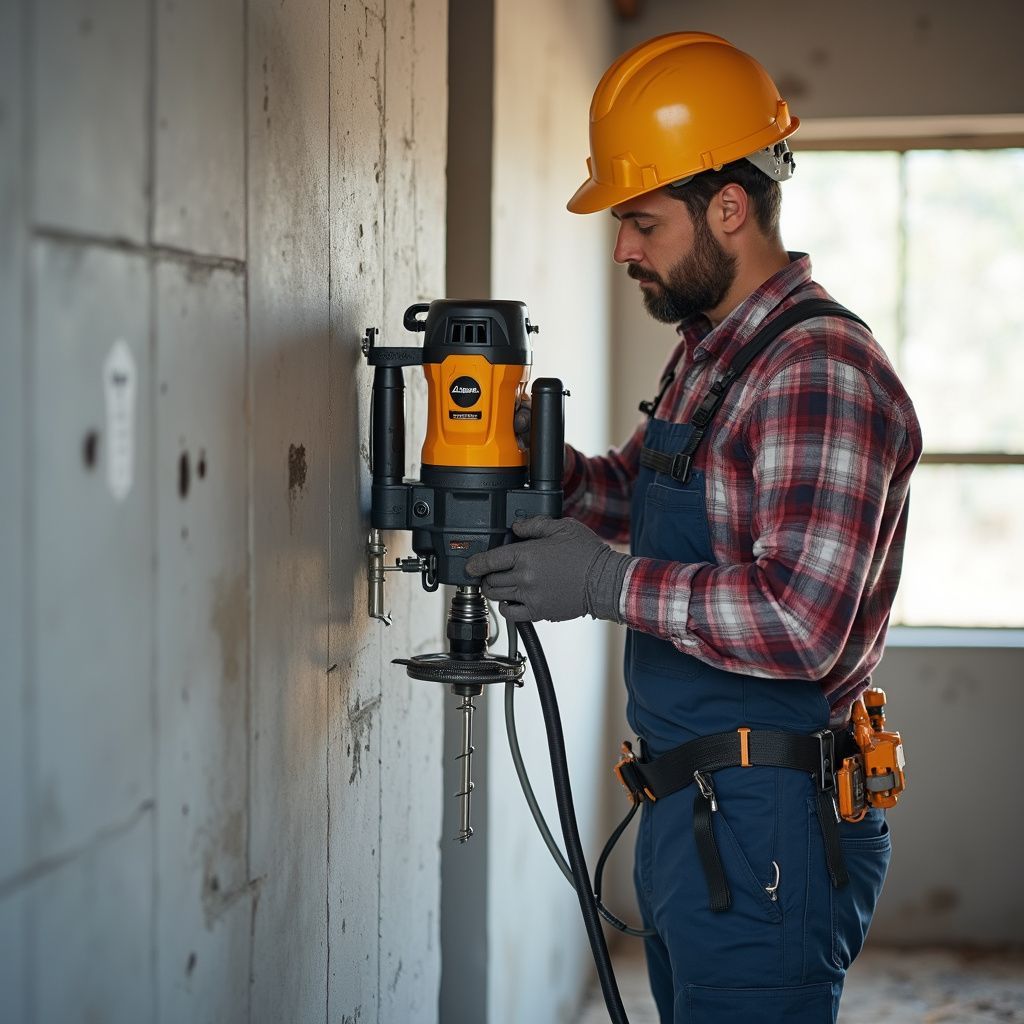
Core Drilling in Plumbing
This technique enables the use of a specialized, circular drill to create precise holes in hard materials like concrete or masonry for pipes, drainage systems, or fixtures. This is often necessary in new construction, renovations, or when a pipe must pass through a concrete wall or floor. The process uses a hollow drill bit, frequently with a diamond or carbide tip, to cut a clean, cylindrical opening, often with a "wet" drilling process that uses water to control dust and lubricate the bit.

Electrical Core Drilling Applications
Electrical core drilling is used to create precise holes for running wiring, installing conduits, and other electrical systems in tough materials like concrete, masonry, and asphalt. Key applications include the installation of electrical lines in new construction and renovations, creating openings for power, and for structural anchoring to support electrical infrastructure. It is also used for extracting core samples to test material integrity, which is essential for electrical work that must be safely integrated into a structure.
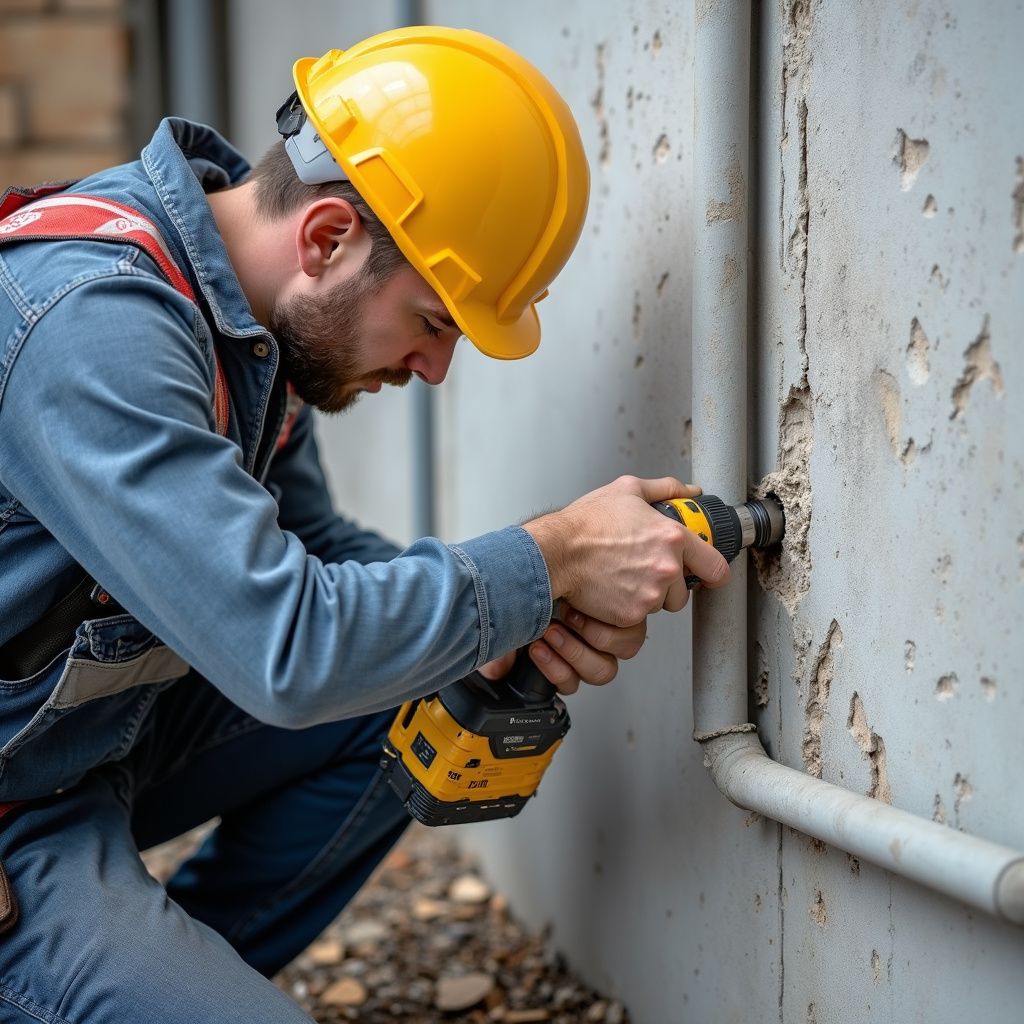
Versatile Core Drilling Uses
Core drilling is a versatile technique for creating precise openings in materials like concrete, asphalt, brick, and stone for applications such as installing utilities (plumbing, electrical, HVAC), structural testing, anchoring heavy equipment, and road construction. Its accuracy and speed make it ideal for projects that require clean holes without causing damage to surrounding structures. And supports various construction needs requiring precise, dust-minimized concrete penetration.

Precision with Less Disruption
Advantages of Core Drilling
Core Drilling Process Explained
A clear outline of each stage in core drilling, highlighting precision and safety measures for HVAC, plumbing, and electrical installations.
Step 1
Site Preparation and Marking
Preparation: Before drilling, the site is assessed, and drilling points are marked to ensure precision. The appropriate core drill bit size and type are selected based on the material and desired hole dimensions.
Step 2
Equipment Setup and Safety Checks
Setup: The core drill is secured, the hollow, diamond-tipped bit is attached, and the water supply is connected to cool the bit and manage dust.
Step 3
Drilling Execution with Controlled Speed
Drilling: The process begins with a low speed to create a groove, then increases to full speed while maintaining consistent pressure. A drilling fluid, typically water or a drilling mud, is pumped through the drill string to lubricate the bit and carry away rock debris.
Step 4
Core Removal and Extraction
Core capture: As the bit cuts into the material, the cylindrical core enters a core barrel attached to the bottom of the drill string, where it is protected and preserved.
Extraction: When the desired depth is reached, the entire drill string is brought to the surface. The core sample is carefully removed from the core barrel, and the process can be repeated to extend the hole by adding more drill rods in a "round trip".
Step 5
Site Cleanup and Equipment Breakdown
Debris and water removal: After drilling, use a vacuum or an air pressure system to remove debris and water from the hole and equipment. This can involve using a vacuum hose connected to the drill, which vents debris into a receptacle.
Waste management: Follow local regulations for disposing of any waste generated during the cleanup process.
Site clearing: Remove all equipment, tools, and materials from the work area, leaving it clean and safe.
Step 6
Safety during Each Step
Personal Protective Equipment (PPE): Wear appropriate PPE, including safety goggles, gloves, hearing protection, and a dust mask or respirator, to protect yourself from flying debris and dust.
Secure the equipment: Ensure the drill is stable and properly supported during the breakdown process to prevent it from falling.
Handle with care: Be mindful of sharp edges and heavy components to avoid injury.
Customer Experiences with Core Drilling
Trusted precision and professionalism in every project
The core drilling service was executed with remarkable accuracy, allowing our HVAC installation to proceed without delays.
Michael T., HVAC Contractor
6 months ago
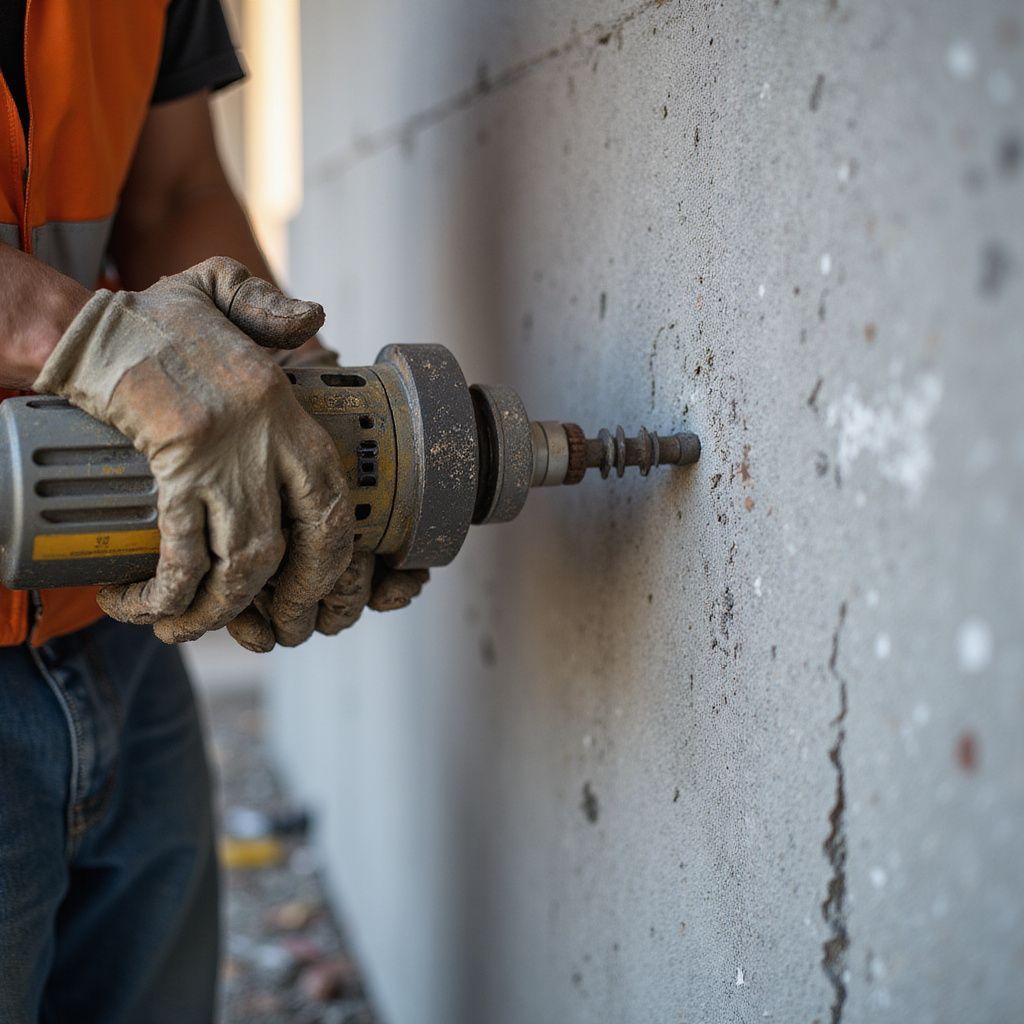
Milwaukee Concrete Cutting’s team minimized disruption during plumbing upgrades by using low-noise core drilling techniques.
Sarah L., Plumbing Project Manager
6 months ago

Their core drilling process was clean and efficient, significantly reducing dust and vibration compared to previous contractors we’ve used.
James R., Electrical Systems Engineer
6 months ago
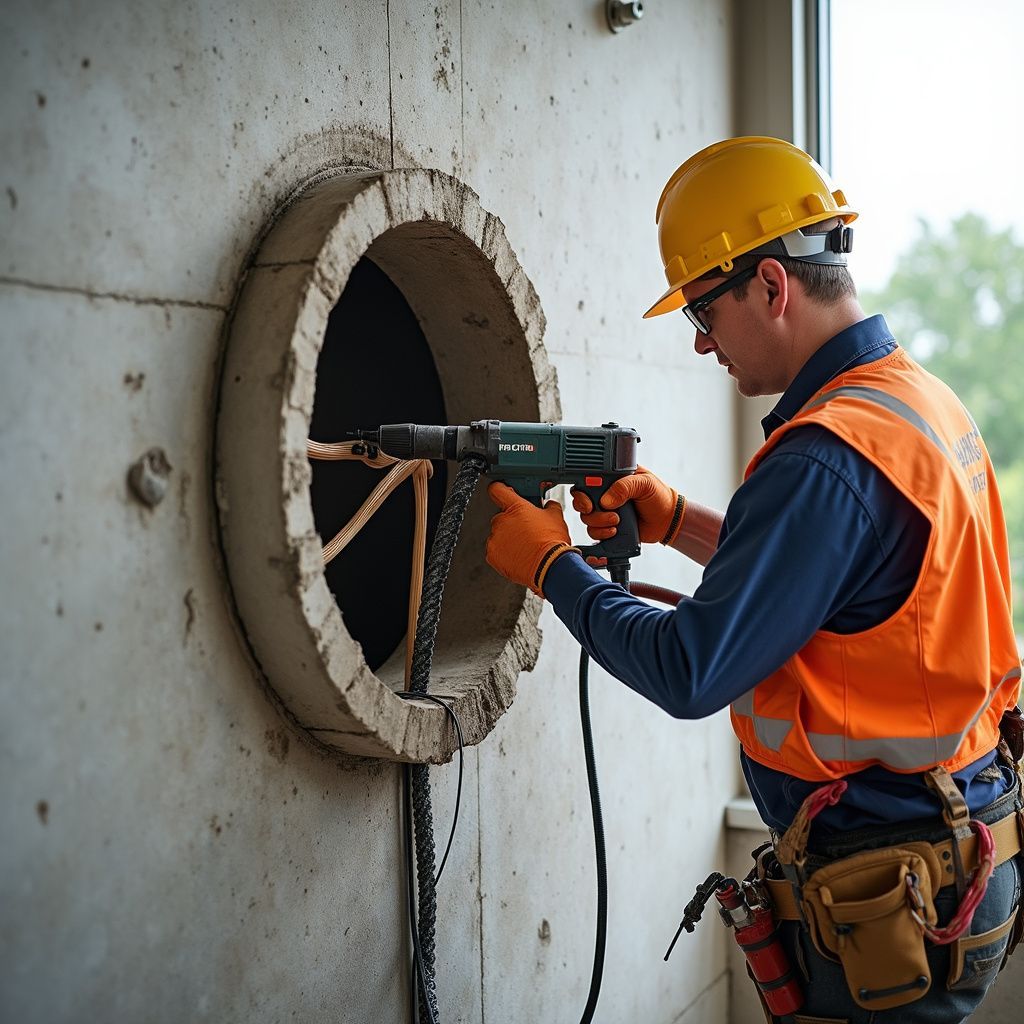
The team’s expertise ensured the drilling was completed safely and on schedule, supporting our tight construction timeline.
Emily K., Construction Site Supervisor
6 months ago
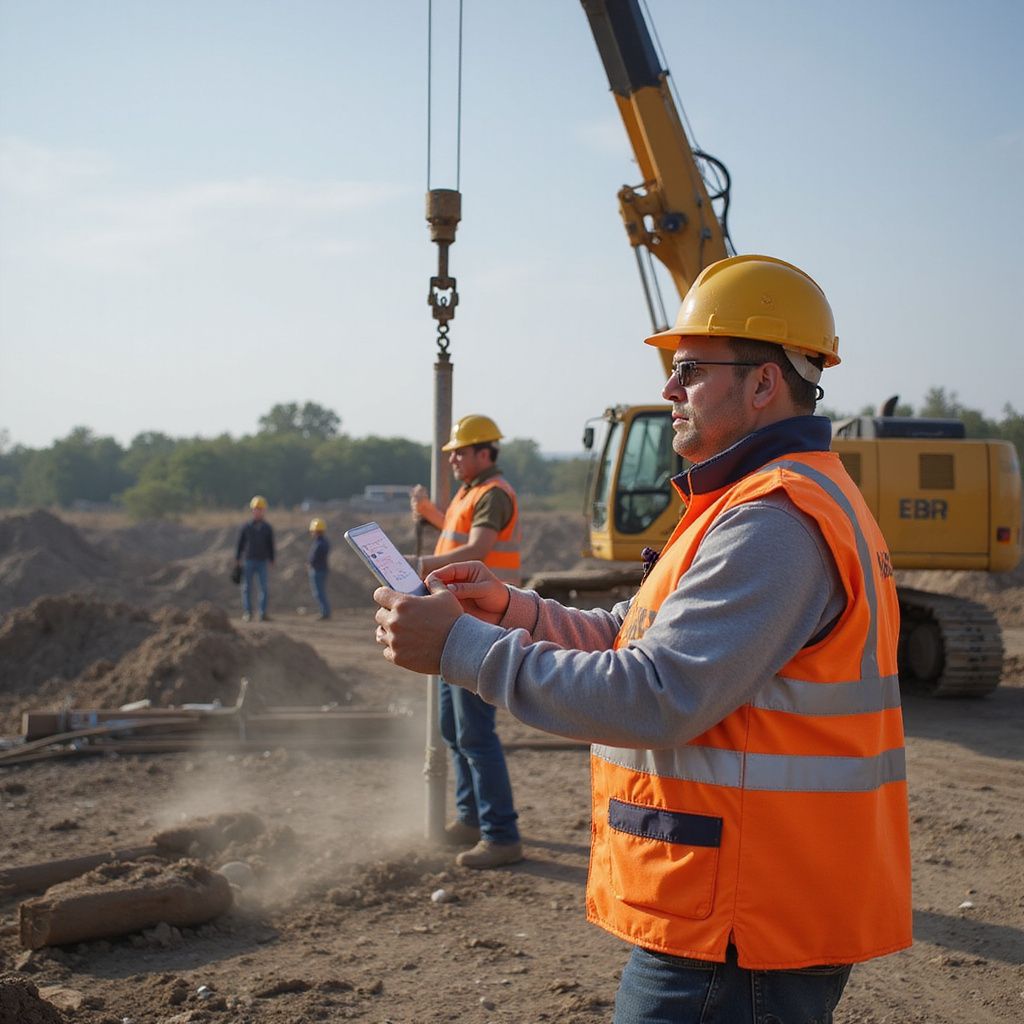
Core Drilling FAQs
What is core drilling and how does it work?
Core drilling uses a hollow, diamond-tipped drill bit to create precise circular holes in concrete. The bit rotates at high speed while water cools the cutting surface, minimizing dust and heat.
Which industries benefit most from core drilling?
Core drilling is essential for HVAC, plumbing, and electrical installations where accurate holes are needed for pipes, conduits, and vents without damaging surrounding structures.
How does core drilling compare to traditional drilling methods?
Core drilling produces less noise, vibration, and dust than conventional methods, resulting in cleaner cuts and reduced disruption on job sites.
Is core drilling safe for existing structures?
Yes, core drilling is controlled and precise, minimizing structural impact. Our trained operators follow strict safety protocols to protect the integrity of your building.
What size holes can be created with core drilling?
Core drilling can produce holes ranging from a few inches to over a foot in diameter, depending on project requirements and equipment used.
Contact Us for Core Drilling Services
info@milwaukeeconcretecutters.com
Phone
414-928-2199
Contact Us
We will get back to you as soon as possible.
Please try again later.